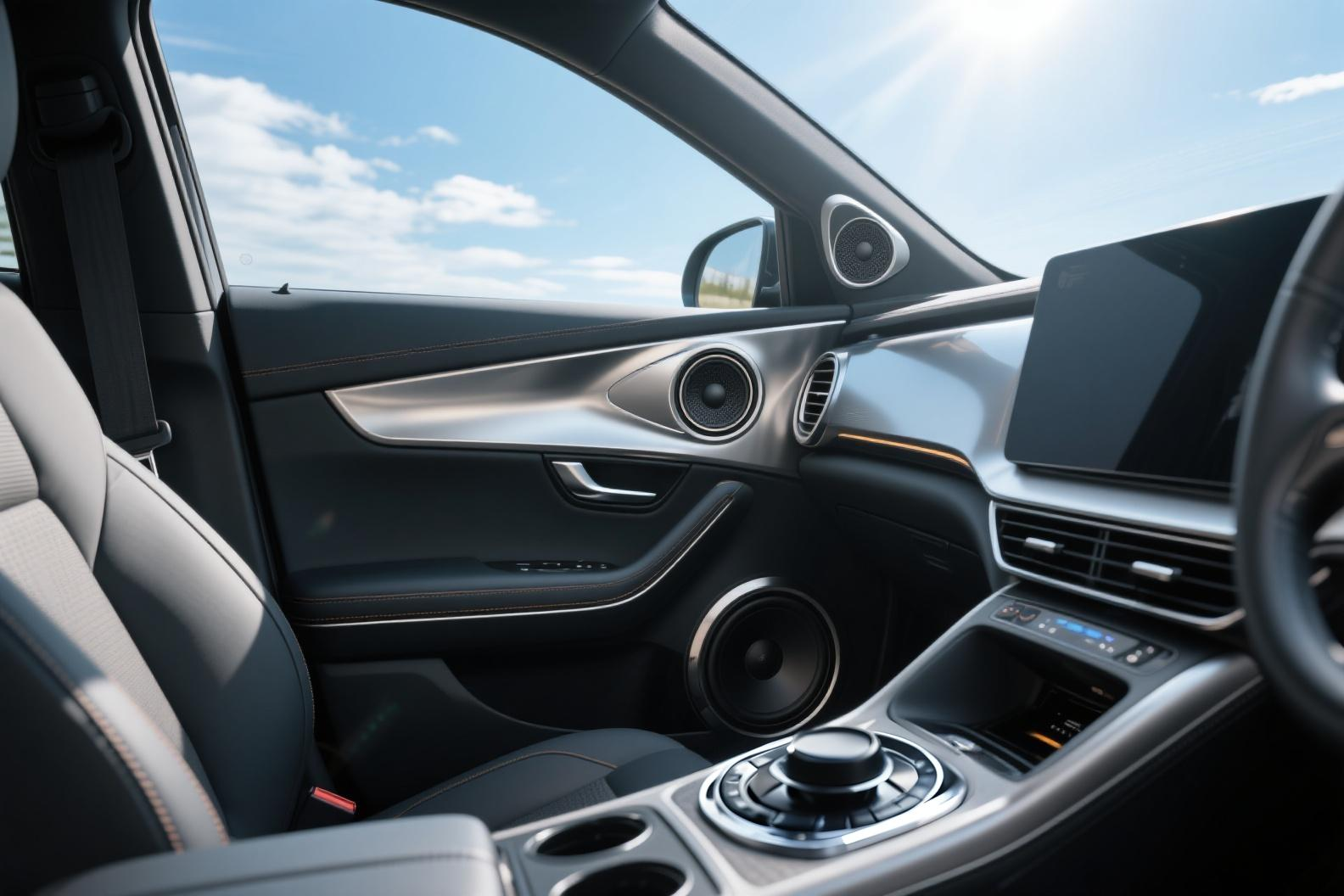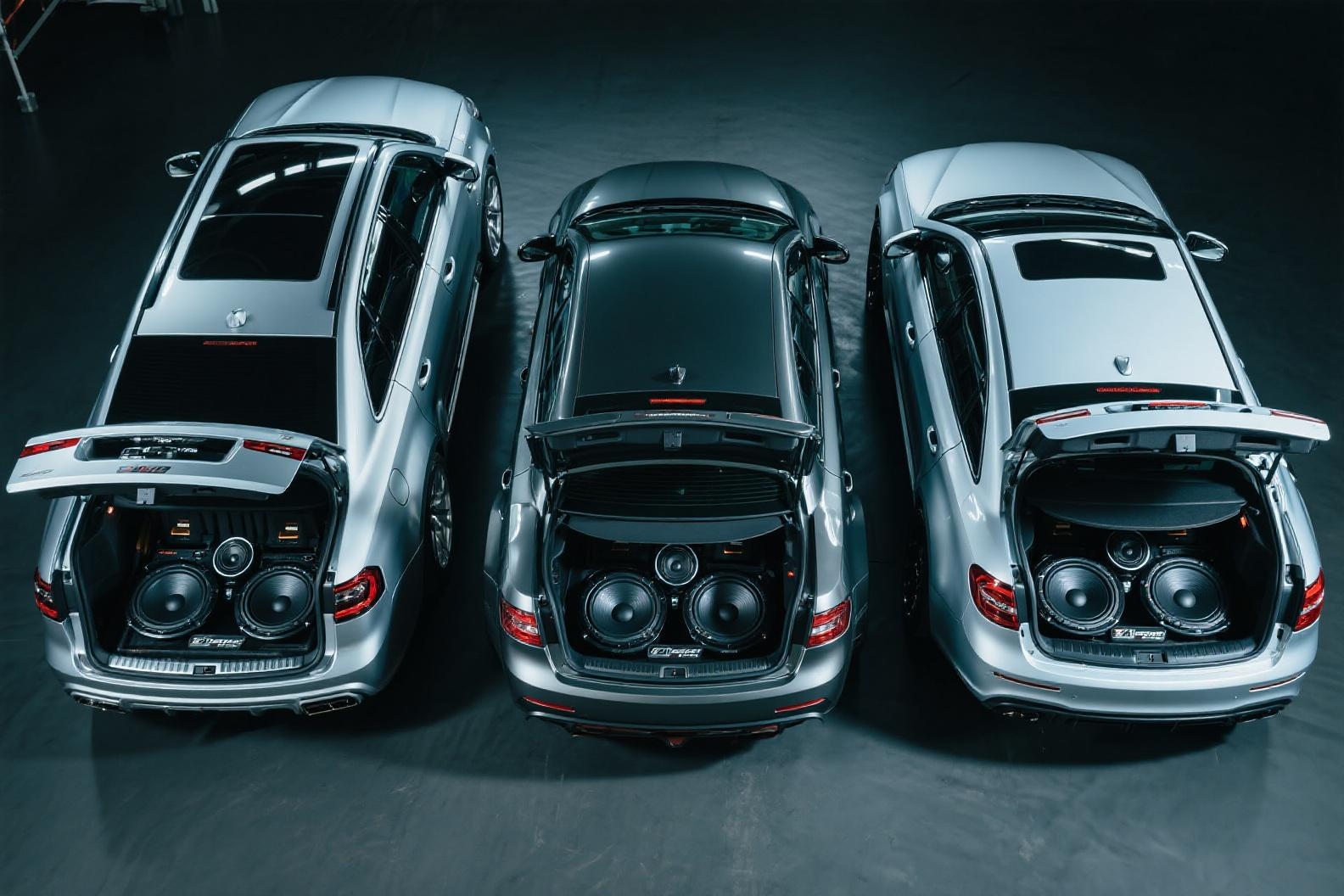For car owners, car audio is not only the core of the entertainment system, but also the soul of the driving experience. Whether it is the surging impact of low frequencies, the restoration of vocals in mid-frequencies, or the delicacy of high frequencies, a well-tuned sound system can make every journey full of the temperature and power of music.
This article will teach you step by step to adjust the bass, midrange and treble of the car audio from the perspective of the audio spectrum, so that the sound quality of your car can be taken to the next level.

1️⃣ Bass tuning(Sub-bass & Mid-bass:20 Hz–250 Hz)
-
Sub-bass(20–60 Hz)
- Characteristic: deep and powerful, more “feeling” than hearing.
- Automotive applications: In the interior environment, excessive sub-bass can easily cause trunk and door panel resonance。
- Tuning suggestions:Use a low-frequency equalizer to control energy around 40 Hz to avoid “roaring” and when installing a subwoofer, pay attention to matching the volume of the cabinet with the amplifier to prevent the low frequencies from being too dispersed.
-
Mid-bass(60–180 Hz)
- Characteristic: It is the core of rhythm and dynamics, making the drum beat and bass more impactful.
- Tuning suggestions:Moderately boost at 80–120 Hz for enhanced rhythm.
2️⃣ Midrange frequency tuning(180 Hz–4 kHz)
-
Low mids(180–400 Hz)
- Characteristic:Source of sound warmth, but too much can appear muddy.
- Tuning suggestions:Male voices and guitars have a high proportion in this band, which can be slightly cut at 250 Hz for better clarity.
-
Midrange(400 Hz–2 kHz)
- Characteristic:It is the “core” of vocals and most instruments, and the lack of it will make the music lose its subject.
- Tuning suggestions:Keep balance around 1 kHz and should not be overly weakened, otherwise the vocals will have a noticeable “sense of distance”.
-
Upper mids(2 kHz–4 kHz)
- Characteristic:Determine the clarity of the lyrics and the penetration of the percussion.
- Tuning suggestions:A boost at 3 kHz increases vocal detail, but if it is too high will make the female voice harsh.
3️⃣ Treble tuning(4 kHz–20 kHz)
-
-
Presence(4–6 kHz)
- Characteristic:Give the sound a “sense of presence in the car”.
- Tuning suggestions:A modest boost at 5 kHz for sharper cymbals and strings.
-
Brilliance(6–20 kHz)
- Characteristic:A source of airiness and finesse.
- Tuning suggestions:Adjust 10–12 kHz for more transparent sound and avoid over-lifting that can cause harshness or prone to auditory fatigue.
-
Practical tips for car audio tuning
-
Tuning order
Start by setting the bass → midrange → treble to ensure that each band does not interfere with each other.
-
Adapt to the interior environment
SUVs, sedans, and hatchbacks have different cabin acoustic characteristics, and EQ settings should be adjusted according to the vehicle’s conditions.
-
Use high-quality audio sources
Poor quality MP3s will amplify high-frequency defects, and no matter how well tuned, they won’t be able to save the distortion.
-
Take advantage of Time Alignment
Let each speaker reach the ear at the same time to get a stereo stage feel.
-
The subwoofer matches the front soundstage
Subwoofer output that is too strong will mask vocals, so use a crossover to control the crossover point, usually set at 80–100 Hz.

Automotive audio band reference table
|
Band range |
Tuning suggestions | effect |
|
20–60 Hz |
Moderately control to prevent body resonance |
Add a sense of shock |
|
60–180 Hz |
Moderately improve to enhance rhythm impact |
Drum beats and bass fullness are better |
|
180–400 Hz |
Cut slightly to prevent cloudiness |
The sound is clearer |
|
400 Hz–2 kHz |
Maintain a balance to ensure the vocals and instrumental body |
Ensure the core level of music |
|
2 kHz–4 kHz |
Slight lift to enhance vocals and detail |
Increase the clarity and penetration of the lyrics |
|
4–6 kHz |
Moderately lift to make instruments and vocals more distinct |
Enhance the sense of presence |
| 6–20 kHz | Finely adjust to increase the sense of air and space |
The sound is more transparent and detailed |
FAQs
Q:What is the correct order of car audio tuning?
Car audio tuning is recommended to start with the bass, then adjust the midrange, and finally adjust the treble. First, determine the crossover point between the subwoofer and the front sound field (usually 80-100Hz), then optimize the vocal frequency band (400Hz–2kHz), and finally improve clarity and spaciousness through the high frequency band.
Q:How to adjust the car subwoofer so that the low frequencies are not muddy?
The key to avoiding low-frequency turbidity is to control the energy around 40Hz to prevent roaring. At the same time, adjust the phase and crossover settings of the subwoofer to ensure a natural connection with the low frequencies of the front sound field.
Q:What effect does midrange tuning have on vocals?
The midrange is the heart of the vocals, especially in the 400Hz–2kHz range. If you lift too much, it will make your voice muffled, and if you cut too much, it will cause a noticeable sense of distance from the vocals. It is recommended to cut slightly at 250Hz and maintain balance at 1kHz.
Q:How to avoid harshness in treble tuning?
To avoid treble harshness, you need to control the energy above 3kHz and 10kHz, moderately increase the brightness by 5kHz, but do not over-raise the high-frequency Brilliance (6–20kHz) segment to avoid long-term listening fatigue.
Q:What should I pay attention to when tuning the audio of different models?
Different models have different cabin space and structure, SUVs have a more obvious sense of low-frequency delay, sedans have more concentrated mid-frequency, and hatchbacks are easy to reflect high-frequency. When tuning, the EQ and time delay need to be fine-tuned according to the characteristics of the model.
conclusion
Understanding the audio spectrum and making targeted adjustments in conjunction with the acoustic environment in the car can significantly improve the sound performance of the car. Whether you are pursuing passionate driving with heavy bass or preferring a music experience with delicate vocals, reasonable adjustment of bass, midrange, and treble is the key to creating exclusive sound quality.
